“The dressage court is the same size no matter where you put it in the world,” Bermuda’s National Dressage Coach Angela Halloran-Smith said to me as we sat in front of a window overlooking Harrington Sound. “That’s huge for us here in Bermuda.” The blue December sky competed in vibrancy with the sparkling saltwater below it. In the distance, anchored boats gently bobbed in the waves against a backdrop of hills dotted with brightly-colored homes.
Imagining Isabell Werth heading down centerline in Aachen, Germany, or Laura Graves leading a lap of honor at Wellington’s Palm Beach International Equestrian Center is easy, but envisioning a dressage scene on a tiny island in the Atlantic, known for beach resorts and golfing, is more difficult. However, dedicated dressage riders will always find a way to make the sport happen. And that’s why Bermuda made for such an interesting dressage destination—it’s a great study of a small-but-mighty community bringing big opportunities to local equestrians and, in turn, spring-boarding those riders into new possibilities off the island, like the North American Youth Championships and beyond.
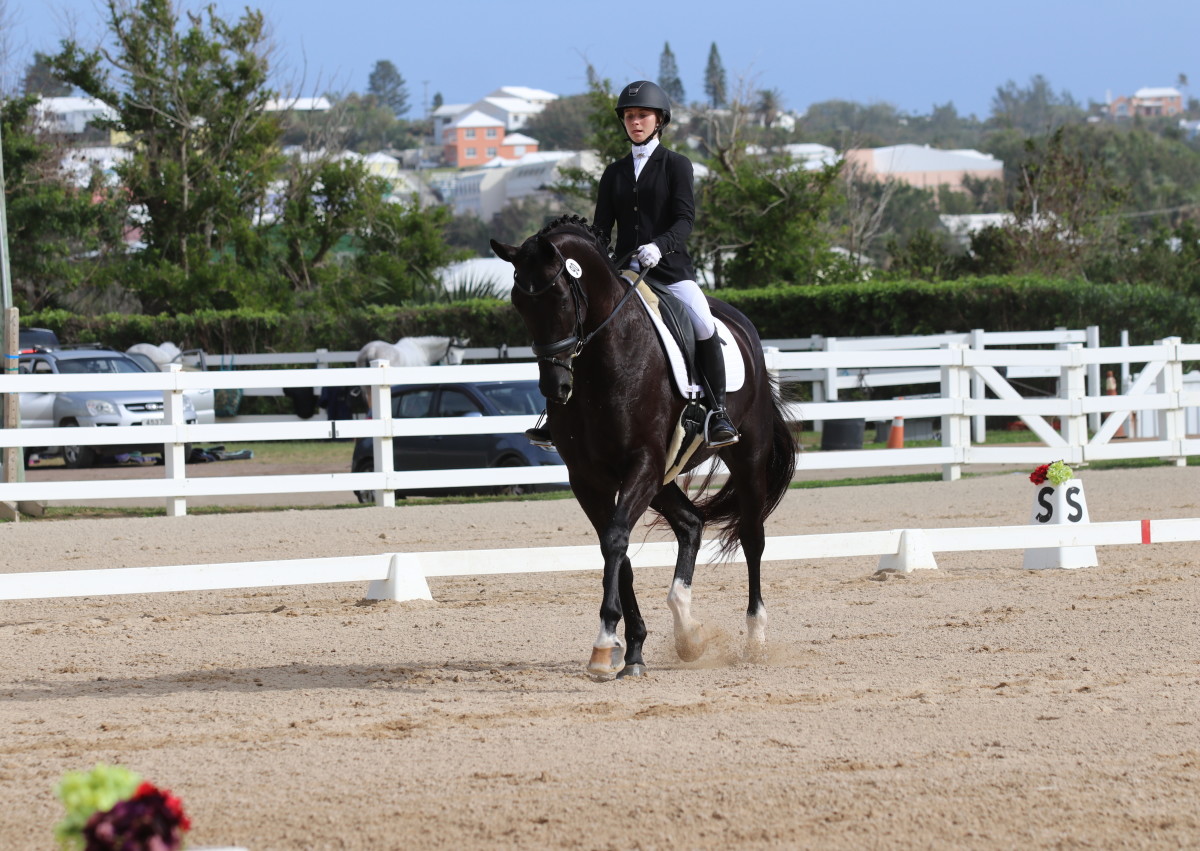
Lindsay Paulsen
The Journey Begins
My short two-hour ride from Boston Logan Airport to Bermuda’s L.F. Wade International Airport felt more like a trip in a seasonal time machine rather than a plane flight. I boarded the aircraft in snowy New England, headed into the clouds for a few hours and then descended over clear blue water illuminated by the sunlight.
The first thing I noticed upon leaving the airport was a cherry red, old-fashioned telephone booth. It looked as though it had been plucked straight from London and randomly plopped near a sidewalk. But random it was not—it was my first reminder that I was in a British Overseas Territory. This fact became all the more clear when I climbed into the passenger seat on the left side of the itty bitty car belonging to my friend and host, Kate Furlong. I had to stifle my panic as we whizzed along the left side—opposite from what I was used to—of narrow roads that snaked through Bermuda’s hilly terrain. People on scooters darted out from blind turns. How on earth does anyone drive a trailer around here? I wondered.
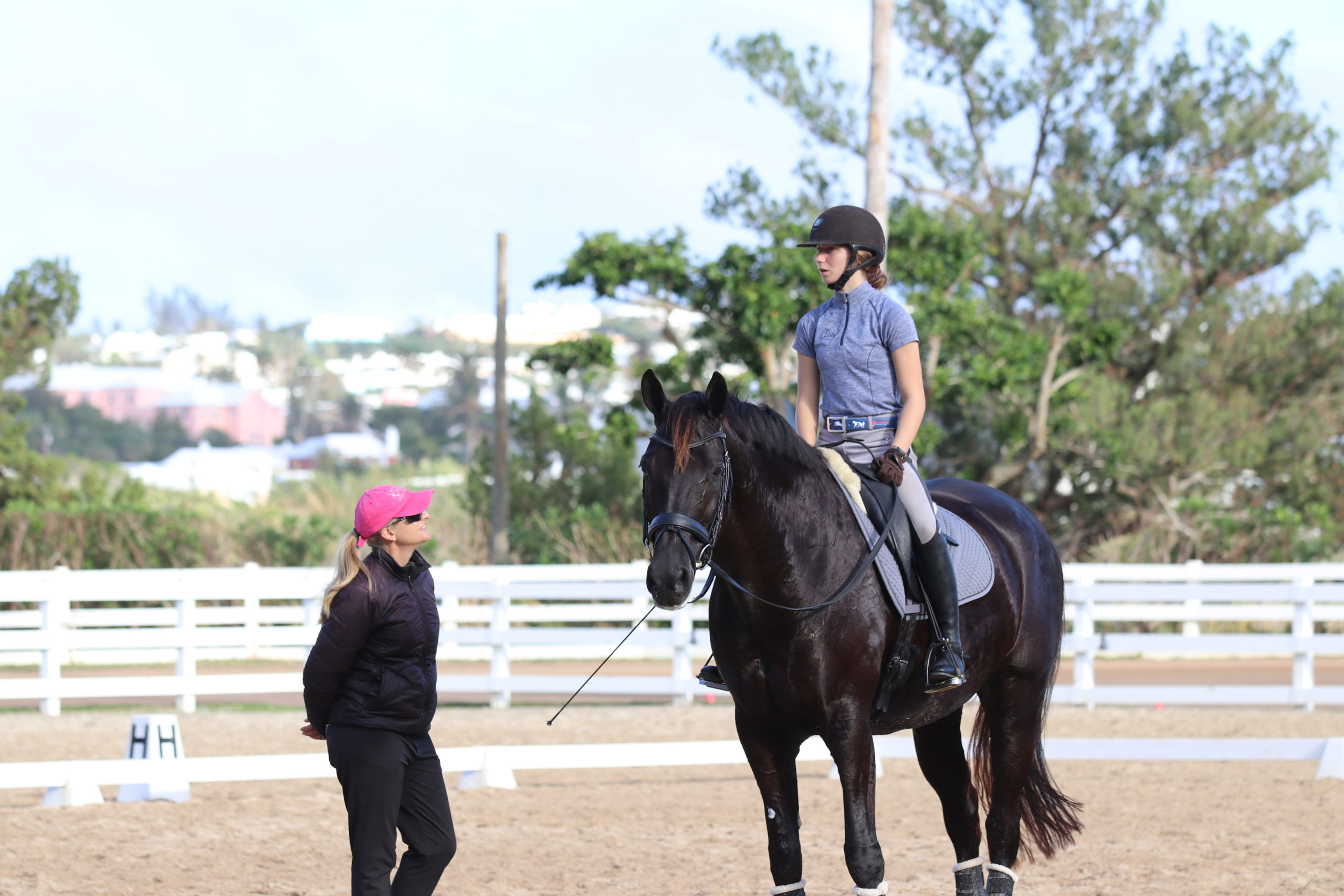
Lindsay Paulsen
Kate distracted me from the traffic by giving me a run-down of the agenda for my visit, which included visiting a local barn, attending an FEI junior rider’s training session, an FEI competition, a judges’ dinner, a schooling show and then a tour of the island’s more conventional tourist hotspots. There was more dressage to see here than one might expect.
Diversity Under One Roof
The first stop on my tour of Bermuda’s equestrian community was Hinson Hall Stables, a boarding and lesson facility perched high on a hill.
In the barn, I met Angela for the first time, who greeted me with a friendly hug and warm, southern accent. As she picked stalls and tidied up, I followed her around the barn, learning how this U.S. Dressage Federation gold medalist came from her native Greensboro, North Carolina, to her current role in Bermuda as the National Dressage Coach.
This facility was a great example of how Bermudians tend to be good at utilizing space efficiently, since, as Angela said, there isn’t an abundance of land on this 20.54-square-mile island. I noticed the facility was fairly compact but offered all of the necessities—a spacious tack room, feed area, office space, several stalls, a large outdoor arena with jumps and a few grass paddocks for turnout at the bottom of the hill. Angela and Kate explained that these paddocks were somewhat of a local commodity, since turnout is such a rarity. The only thing missing was a dressage arena—but every savvy dressage rider knows that the basic principles of dressage can be practiced anywhere the footing is sufficient.
As the afternoon progressed, eager school-aged kids trickled in for lessons. Between the various lessons, mingling parents and the obligatory Jack Russells thrown into the mix, the scene was lively. Seeing this reminded me that whether it be in Bermuda or the United States, a thriving grassroots level is what we need to cultivate to promote the sport.
I studied the activity in the ring, noting nice quality warmbloods, sassy lesson ponies and dependable school horses. The group was a real mix, and each horse seemed to have an interesting backstory, coming from one part of the globe or another. One pony was from France, another horse was a rescue from down the road. Others came from the U.S. or Canada or Europe.
The people who filled the barn were just as varied as the horses—some spoke in British accents, others in American and, if I listened carefully, I could even detect a few Bermudian accents. Between the horses and humans, being surrounded by so many nationalities felt very cosmopolitan. And not only were the riders diverse in cultural background but also in riding ability. Hinson Hall is home to walk–trotters, hunter/jumper riders, low-level dressage riders and even 2015 Pan American Games dressage competitor Virginia “Vee” McKey. You don’t often find all of that under one roof in the U.S.
Bermuda’s Youth Dressage Trailblazer
The following day, we headed over to Bermuda’s National Equestrian Center. The showgrounds’ amenities are not lavish but get the job done while fulfilling many roles. The land is carved into the side of small, rocky cliffs with a golf course looming above. There are two large arenas encircled by a dirt driveway that also functions as a track for pony racing. Since most riders hack over from their own barns, there isn’t any stabling or official trailer parking, but various hitching-post-like structures allow for several horses to be tied for tacking.
In the main arena, I was introduced to Bermudian junior rider Robin Stempel, who is aiming to qualify for the 2020 NAYC with her German-bred Hanoverian Rossano Royal 2 (“Ross”). Working toward that goal is a feat even for the top-tier young riders in the U.S. For Robin and her team of support, the process has involved a horse-shopping expedition to Germany, training in the U.S., trips to Lendon Gray’s Youth Dressage Festival and previous NAYC competitions, and hours training in the arena, as well as the communal efforts to host NAYC qualifiers on Bermudian soil.
“The support is really overwhelming,” Robin said. “It’s just nice to know I have the support of my whole country backing me, and especially the community, too. But it is a bit nerve-wracking, you know, because I want to do this for my country. I want to compete and show to everyone, This is our tiny island. This is what we have. This is our potential and our talent.” For Robin, the pressure to succeed melts away when she’s in the ring and a qualifying score comes over the loudspeaker. Hearing her whole community cheering for her and sharing in her success is a huge perk of representing this small, close-knit country.
While it might seem that a significant amount of time and resources have been dedicated to sending only one youth rider to an international championship, the hope is that Robin will be the first of many youth riders to pursue big goals off the island. “It means more to me to know what I’m leaving behind—for people to come and fill my spot,” she said. “If they want to do the Junior Championships, they know, Someone else has done this before me. There’s clearly a road to do that.” But for now, Robin is focused on the journey and the training process, rather than the final result.
In addition to Robin and her family, Angela has been key in leading the charge toward NAYC. She firmly believes that Bermuda has the horseflesh, the riders and the resources to pursue dressage on a large scale. During the afternoon I observed, Angela worked with Robin and Ross to prepare their tests that would take place the next day, in the same arena—the only full-size one on the island—at the FEI Dressage World Challenge and Junior Qualifier.
While their session could have been a dressage lesson virtually anywhere in the world, everything that followed felt uniquely Bermudian. Ross was picked up by the local hauling professional in a small trailer pulled by a miniature pick-up truck that also contained farrier equipment. The driver was the horse transporter, farrier and feed and shavings provider. We rode along behind the trailer, and I suppressed my gasps as it barely squeaked through the narrow roads. Why there’s virtually only one man who handles the trailering on the island and why hacking to places is the more common alternative became clear to me. When we arrived at the barn, my jaw dropped at the seaside views from Ross’s stall. Little did he know that his box overlooked one of the most coveted sights in the world with water and yachts right outside his window. While I ogled at the view, Robin and her mom buzzed about the barn preparing Ross for the weekend’s competition with the usual bathing, icing and tack cleaning.
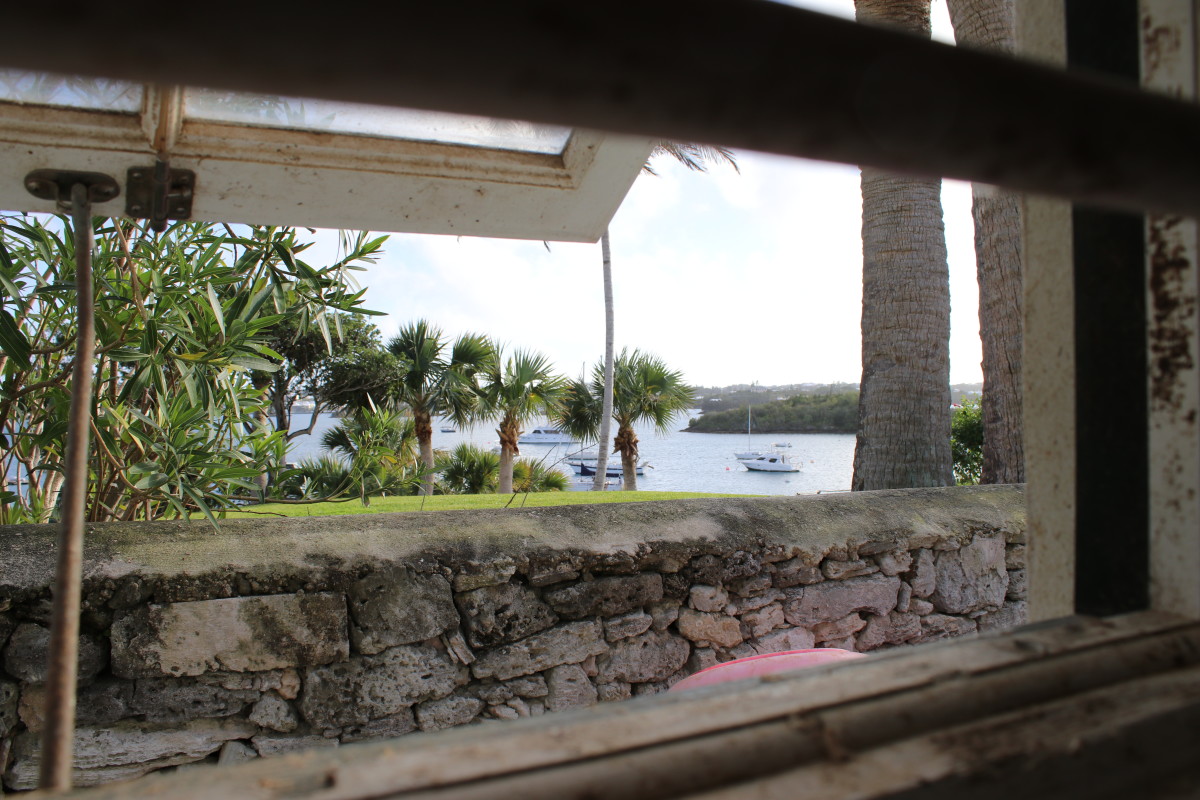
Lindsay Paulsen
A Different Kind of Show Scene
When it comes to an international show in Bermuda, forget preconceived notions about FEI competition. The particular event I attended was part of the FEI Dressage World Challenge: a collection of competitions aimed at giving less-experienced riders in more remote countries the opportunity to compete internationally without having to leave their own country. The DWC offers five performance levels: Youth, Senior I, Senior II, Prix St. Georges and Intermediate I. It also divides competitors into two age groups: 12-16 years and 16 years and older. This particular show was also the Junior Qualifier, allowing Robin to earn qualifying scores toward the summer’s NAYC.
For this show, American FEI four-star judges Lois Yukins and Jeanne McDonald were the presiding officials who judged a total of seven rides: three in Senior I (FEI Children Individual Test), three in Youth (FEI Children Individual Test) and one in Senior II (FEI Junior Team Test). The morning began with the required veterinary inspection and riders jogging the horses in-hand in front of a jury of officials and FEI veterinarians. The process was similar to what we see at more standard FEI shows, however, the ambiance was far more relaxed and riders were required to wear their competition attire during the jog. Following, the program progressed quickly and efficiently with all rides complete within about an hour and a half and concluded with an awards ceremony. The scores were then entered into FEI records. Final results, determined at a later date once all participating countries hosted their shows, revealed that Bermuda ranked first in its region, which also included Barbados and the Dominican Republic.
According to Jeanne, who has been coming to judge in Bermuda for about eight years, the quality in the riding is cyclical: A group of kids will successfully ride up the levels and then they eventually leave to go to boarding school or university and the cycle starts again. She has observed that this is typical of dressage in island communities. What is unique to Bermuda’s dressage community, she said, is the communal sharing of quality, privately-owned horses and ponies—because of the limited number of horses on the island—in addition to the hospitality they show the judges. “It’s like they’re my family,” she said. “They’ve been so kind to me each time and they do so much to make the visit worthwhile. It’s very rewarding to come here.” Lois, who has been traveling to Bermuda to judge for about 25 years, agrees that the kindness of the community is one of its best qualities. “They are so good to each other,” she said. “They’re very supportive. Kind and helpful.”
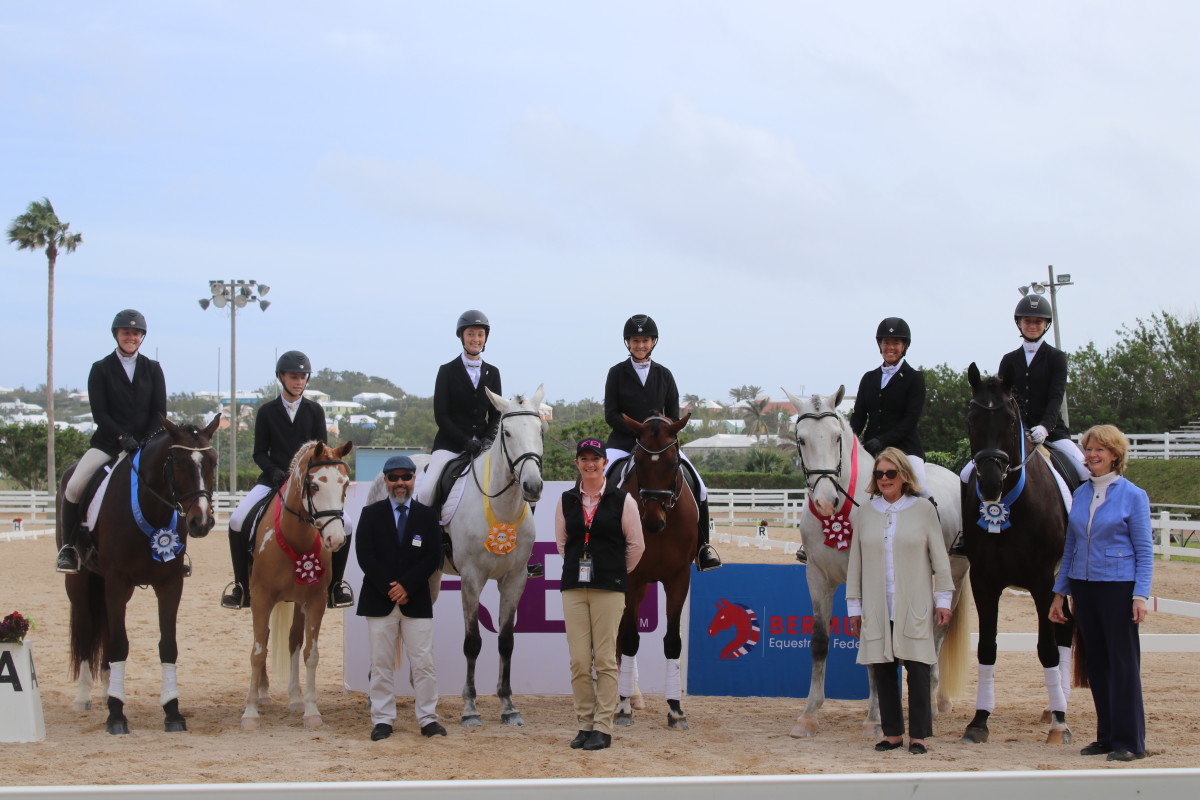
Lindsay Paulsen
The evening after the FEI show, competitors and members of the community were invited to attend a dinner at an elegant Bermudian estate. Although the setting and the accompanying meal were both noteworthy, the most memorable part of the evening took place after dinner and evolved into somewhat of a “fireside chat” with the judges. Noshing on our desserts, we all gathered in a plush sitting room with many of us cross-legged on the floor as Jeanne and Lois shared tips, advice and observations from their judging experiences. The atmosphere was friendly and comfortable—the room was full of laughter but also lots of learning. Everyone was eager to ask questions and the judges were generous in sharing their knowledge. I hadn’t experienced anything like this in the U.S. and learning from international judges in such a non-intimidating atmosphere was refreshing. Everyone felt more like friends than competitors or event officials.
A low-key dressage schooling show took place at the same facility the following day with Jeanne and Lois. While the show was still small, there were more kids and ponies competing. You could also see the communal role that the horses played, as they were shared between various riders throughout the day. Another benefit of the small community was that the show began at a civilized hour in the morning and ended in the early afternoon. It makes for a relatively easy day for judges, trainers, riders and parents. Once the show concluded, horses and riders hacked back to their respective barns or waited for their “taxi” ride home.
Bermuda’s Beauty
During my final full day in Bermuda, Angela showed me the popular tourist destinations around the island as well as some local secrets. I saw pristine beaches, wandered around the charming town of St. George’s and shopped in Hamilton, the business-oriented capital. Angela shared stories of her experiences on the island, telling me about popular American trainers and clinicians who came to Bermuda over the years, including Lendon Gray, George Williams and Robert Dover. Who would have guessed that dressage would bring us all to this tiny island? In the end, maybe we all have more in common than we think. But as the similarities are worthy of celebration, so are the differences. Like Angela said, the 20-by-60 sandbox is the same anywhere you put it in the world. The people and horses who bring it to life make it unique.
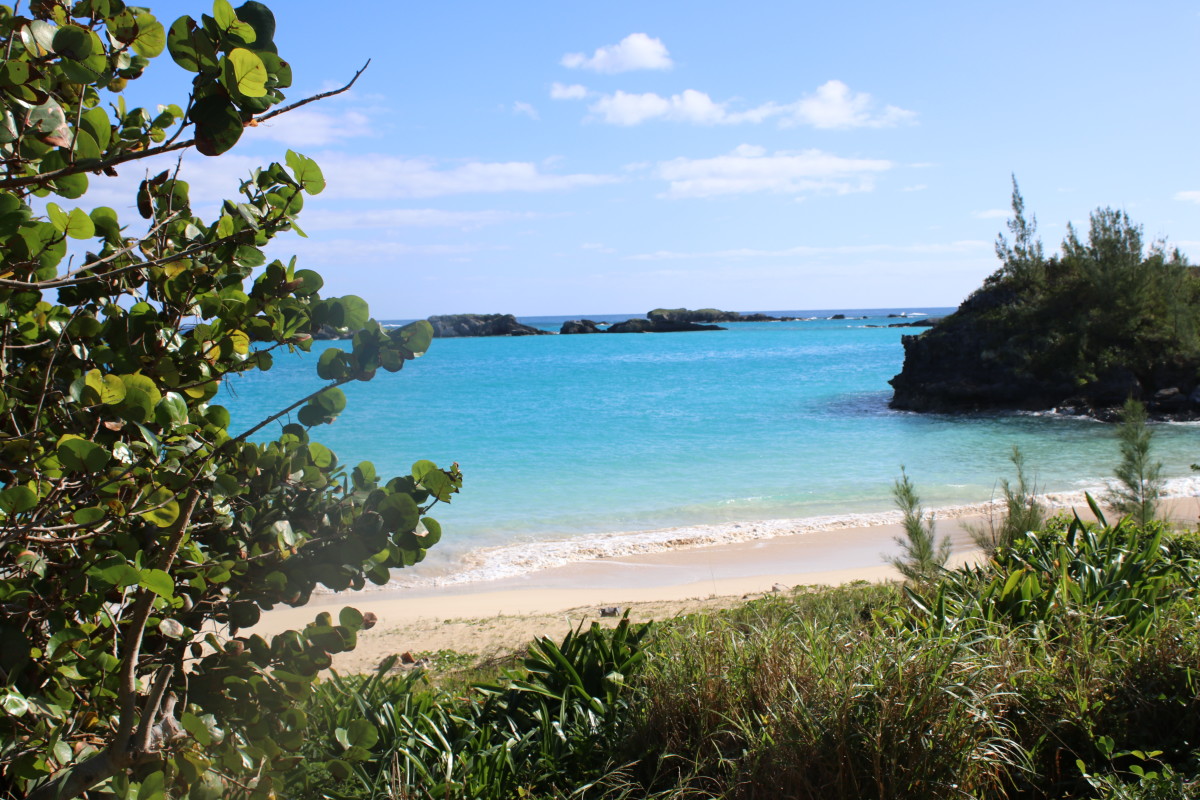
Lindsay Paulsen
Sidebar: Horsekeeping in Bermuda
Managing any equine athlete, regardless of where you are based in the world, is a challenge. Horses are complex creatures, each with their own individual needs—ranging from dietary requirements to corrective shoeing to joint injections. Even in countries with a large equestrian community, finding the right support for a performance horse can be difficult. In Bermuda, island life—with white sand beaches and warm weather—comes at a price. The geographic challenges add a new layer of complexity to the horse-management puzzle.
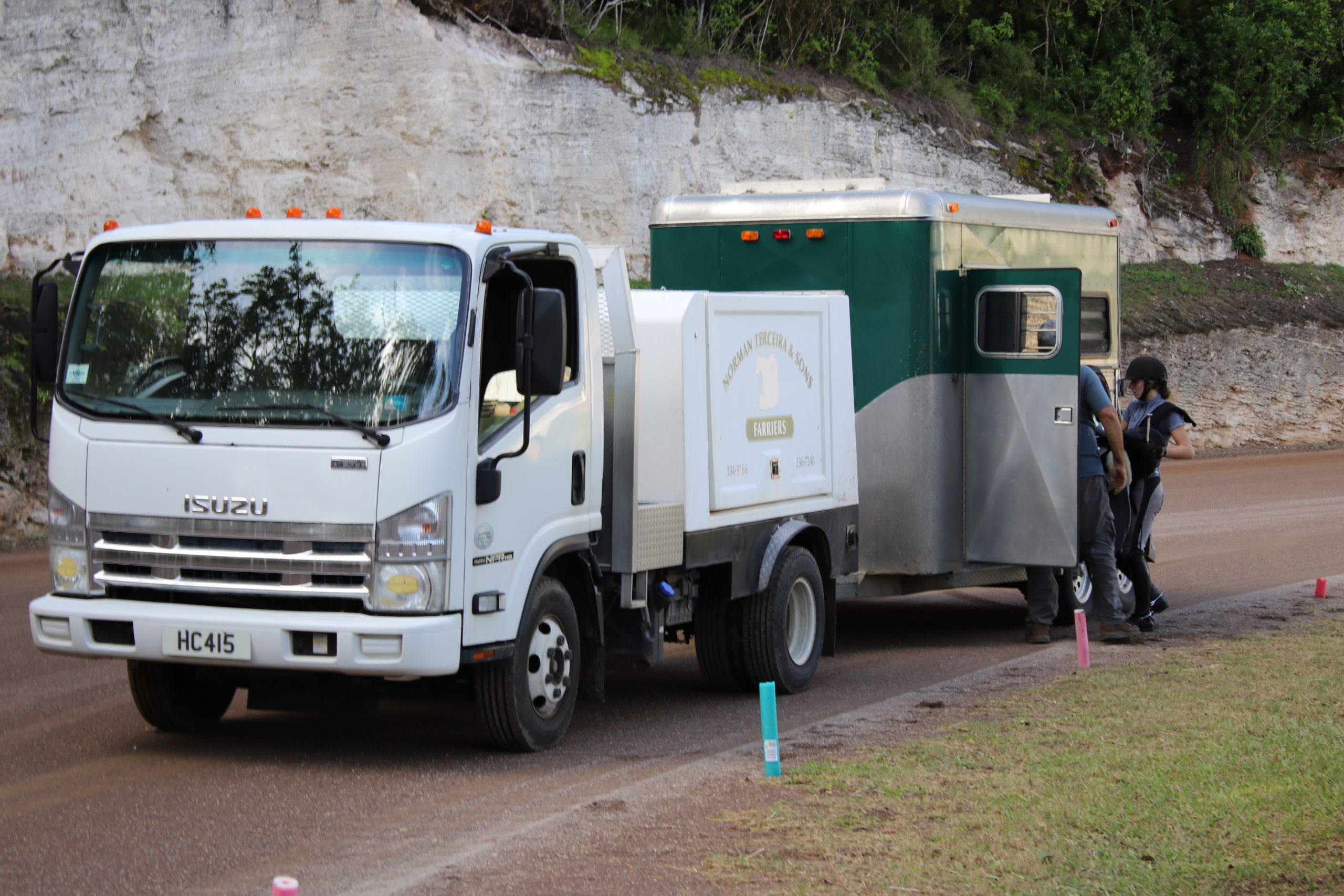
Lindsay Paulsen
For example, though there are equine professionals like veterinarians and farriers on the island, there aren’t many. That means if your horse requires a specialist, such as a bodywork professional or even a saddle fitter, they must be flown in from another country, often the United States or England.
In the case of Bermudian junior rider Robin Stempel, who is working to qualify for 2020 North American Youth Championships, special measures had to be taken to make sure that her equine partner, Rossano Royal 2 (“Ross”), could flourish on the island when they bought him in Germany.
After Ross was purchased, he was shipped to a friend and trainer in North Carolina for training purposes and to ensure that his body could handle a warmer climate. For example, could he sweat the way he needed to in hotter conditions? If any health concerns were discovered, Robin and her team of support could address the issues with specialists in the U.S. before he made the trip to Bermuda. Similarly, when local riding instructor and Bermudian resident Kate Furlong purchased her gelding in the U.S., she found that it was easier to have him fitted for a saddle before he was flown to Bermuda.
In addition to tack, obtaining the typical horse-care staples requires special planning since feed, hay and supplies must be imported from other countries. Because of the heat and humidity, feed requires special storage and, therefore, can’t be purchased in bulk due to limited space—requiring strategic ordering.
Another challenge the island environment presents for horses is limited access to turnout. Because space is tight, there aren’t vast, grassy fields for horses to have unlimited time outside. This places more pressure on owners to ensure that their horses are getting out every day in some way to stretch their legs and receive mental stimulation. For National Dressage Coach Angela Halloran-Smith, this aspect of horsekeeping has affected the way she rides and trains with greater emphasis on plenty of walking in the warm up.
Sidebar: Meet Annabelle Collins, Bermuda’s International Dressage Star
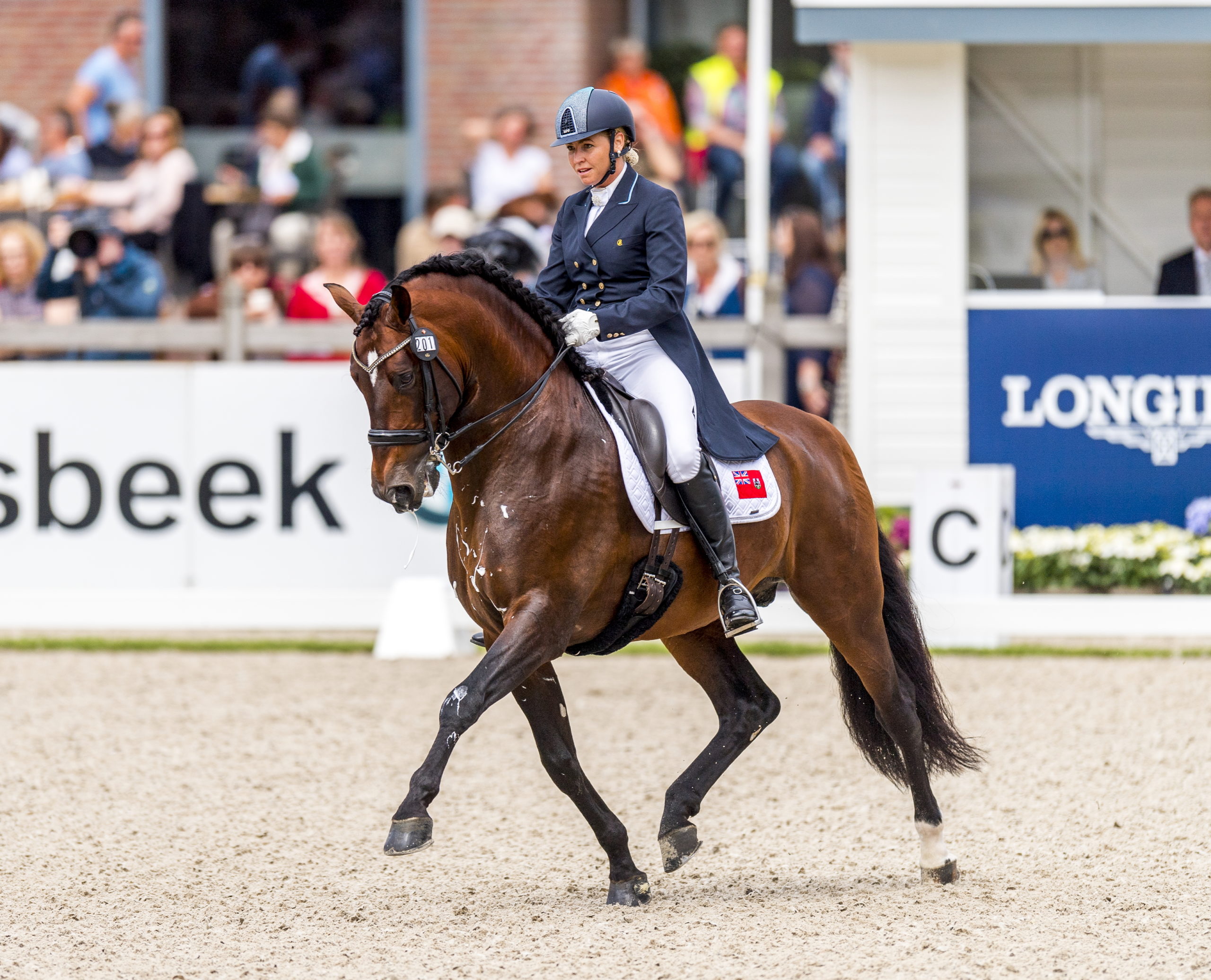
Arnd Bronkhorst
Bermuda native Annabelle Collins, who earned her ticket to the 2020 Tokyo Olympics, is living proof that big dreams can be born on small islands. She grew up in Bermuda until the age of 14, when she left to study abroad and later attend university. At the time, her brother Tim Collins was eventing successfully at the international levels—eventually competing at the Badminton Horse Trials and the Olympics—and Annabelle was also on an eventing trajectory. “When my brother was competing at the World Equestrian Games in The Hague [1994], I wandered over to watch some of the dressage competition and I watched Anky [van Grunsven] and Isabell [Werth] and I was completely hooked,” she said. “And then I decided that was the avenue I wanted to follow, but I really had no idea about dressage.” She began competing at the Junior and Young Rider level in England and discovered the complex and technical nature of the sport.
After 20 years, she’s trained a few horses to Grand Prix and she has some young horses coming up through the ranks. “I feel it’s just the beginning—I hope!” Annabelle credits her success to Dutch trainers Diederik Wigmans, Hans Peter Minderhoud, Edward Gal, Nicole Werner and Annabelle’s sister-in-law, Dutch team rider Leida Collins-Strijk.
Annabelle’s mount for the Tokyo Olympics, Joyero VG, is a Spanish horse she and her husband purchased when he was a young horse. “One day I just started asking him about the Grand Prix work—the piaffe, passage, the one-tempis. He learned the whole Grand Prix in a month and I was just like, This horse is a genius!” He got nearly 69 percent in his first international Grand Prix, which was also his first-ever Grand Prix. “He’s just overwhelmed me ever since, really,” she said. “I get very emotional about him. He’s a really exceptional horse with a big heart. It’s not always easy to find ones like that, but it’s even better when you train them yourself from a young horse up. It’s very satisfying.”
In the midst of a dressage world dominated by major European countries, are riders from small countries like Bermuda often underestimated? “Maybe to a point,” Annabelle said. “But I’m quite a strong character, and I like the fact that maybe I can just prove them wrong. … But I also feel that I enjoy representing my country, putting my country on the map. That also makes me proud.”
Representing Bermuda in the Olympics means everything to the rider, who considers it a childhood dream come true. “With this sport, it’s always about perseverance. … The reason I’m there is because I found a good horse, I trained him myself, I dedicated my life to try and get to Grand Prix and try to get to the Olympics. It’s been a long process. I’ve been trying for 20 years or more.”
Now, she is predominantly based in Europe with her husband, Spanish Grand Prix dressage rider Agusti Elias, and they split their time between Holland in the summer and Spain in the winter. Annabelle plans to visit Bermuda to give clinics and help some of the younger riders. “It’s a small island, but there’s a lot of passion there and a lot of people supporting the equestrian sport and trying to make it grow.”
Special thanks to the Bermuda Dressage Group for making my trip possible and to my hosts, Angela Halloran-Smith and Kate and Shawn Furlong for their hospitality.
Editor’s Note: Although the 2020 FEI North American Youth Championships and the 2020 Tokyo Olympics did not occur due to the COVID-19 pandemic, Bermuda’s equestrian community continues to move forward with an eye toward the future. The hope remains to elevate the sport of dressage on the island, but also on a global scale. Riders like Annabelle Collins and Robin Stempel have lit the path for the next generation of Bermudian equestrians.
This article originally appeared in the Spring 2020 issue of Practical Horseman










